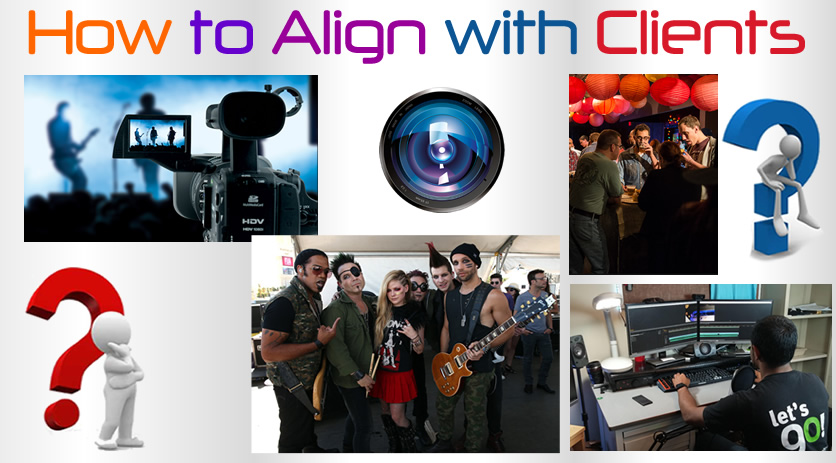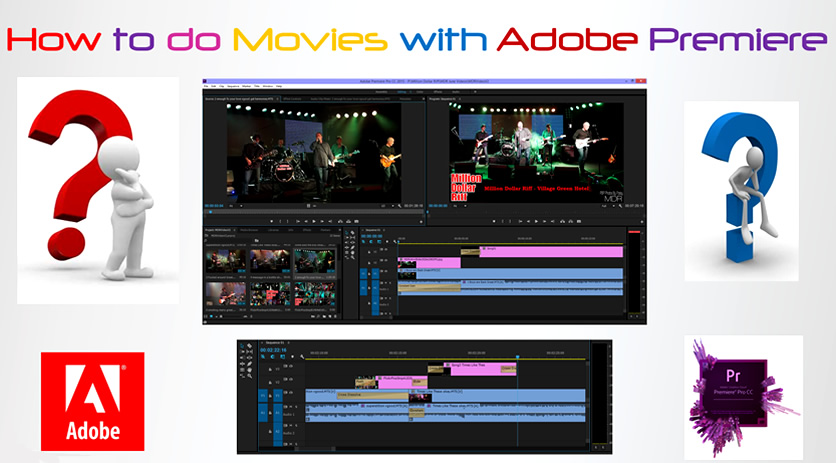An essential part of producing photos and videos for clients is to understand their needs and expectations, so they end up with a Media Product they really love.
Communication and artistic vision is often a tough path to navigate, so making sure everyone is on the same page at the start of a Photo or Video Project is vitally important.
Clients and Photo Projects
Photo Projects do not seem to be nearly as troublesome as Live Video Projects. Often we can Photoshop individual images to improve them, or instantly remove them if the client is not happy with some of the images.
The only problems we have encountered thus far with Photos was one issue with a singer where he did not like his mouth open near the microphone in pictures because he thought it looked like he was about to perform a sex act on the microphone!
The only other issue we have had were on some Band Promo Shots, where we produced photos of Band Members smiling and having a good time, but they really wanted a far more serious look with nobody smiling.
To solve these “not on the same page” problems with Photos, we ask prospective clients to view similar themed Photo Galleries we have made for other clients.
We also often put together a Pinterest Board of Images so that they can look at it and tell us what they like.
For example this Pinterest Board:
Clients and Live Video Projects
Making a Production Video is far more complicated and time consuming than taking some still photos of a show, or holding up an iphone and pressing record. There is no quick-fixing of Videos with Photoshop, and it is difficult to remove or crop many video sections.
It is vitally important to fully understand the Clients Needs and their Desired End Products before the Project commences.
For Example, here is a video we made for a Client which we thought was a really good product, and captured a typical live performance.
However, there were a number of aspects of this Production that the Band were not happy with.
These were as follows:
1) Video Soundtrack – They believe we “promised to get them a multi-track desk feed from the venue and remix it into the video soundtrack”. They felt cheated when this did not happen, and the sound track contained only live sound with crowd noise evident.
2) Fonts Used – They loved the font we used for the band member identification, but they hated the font we used for the “catch phrases” that displayed as the songs played. They said the font did not fit in with their branding, and was inconsistent with the rest of the video.
3) Breaks in the Set List between Video Recorded Songs – They were not happy that we could not record songs back to back, due to SD Card writing limitations.
4) Footage Quality Changes between Wide Angle, Drum Cam, and Close Ups – They did not like how the wide angle footage looks grainy and less sharp than the close up shots. They believed it interfered with flow and continuity. They also did not like that the Drum Cam footage was not as clear as full lighting shots of the singer.
5) Not Being Up Front about OUR NEEDS – They were annoyed that we were not up front from the beginning about our needs during the project: eg. one song break between targeted songs, one point of contact with the band, fast decision making and turn-around times.
6) Too Much Footage of Audience Singing – They were not happy with the “Rain” song that featured a lot of audience singing. In their opinion this made out like the band was too lazy or incompetent to sing the song themselves.
7) Release of Videos to the Internet – They were really annoyed that we uploaded what they believe were not finally approved videos to YouTube. A music venue also linked to one of these videos on the venue’s Facebook page. The band believed that the whole marketing image of the band was compromised by such activities.
All of the above issues resulted because there was not enough clear communication between the Team at PBP and the Band throughout all stages of the Project.
Video Production Check List
To overcome these types of issues in the future, Photos By Passy has developed a comprehensive Video Project “Check List” to make sure “everyone starts on the same page” and the project runs smoothly to a happy completion.
The Main parts of this checklist are as follows:
1) Establishing all Client Needs Before Starting the Project
2) Making Clients Aware of Product Limitations
3) Supplying a List of Our Needs to the Client
4) Agreement on Delivery and Distribution of Final Products
The full Check List ended up being 13 pages long, and it can be viewed at the link below:
Photos By Passy Video Project Checklist
By using this Video “Check List” for all of our upcoming Live Music Video Projects we are confident that Clients will only engage us if our type of Product is what they really want. Furthermore, when engaged for a Live Music Video Project, we will be able to meet all of their needs and expectations.
There will be no controversy, confusion, or misunderstandings, and the Project will be one where all stakeholders are happy with the final outcomes.
Enjoy,
Passy

